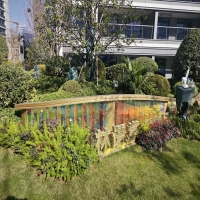Welcome to the website for landscape facilities products and knowledge.
How does the table’s design perform in terms of resistance to impact or heavy use?
When assessing furniture for commercial spaces or busy households, the table's resistance to impact and heavy use becomes paramount. Modern table designs incorporate multiple strategic elements to ensure longevity under demanding conditions.
The foundation of impact resistance begins with material selection. High-pressure laminates, powder-coated metals, and solid wood construction each contribute unique protective qualities. These materials undergo rigorous testing to measure their response to sudden impacts and sustained weight.
Construction methodology plays an equally crucial role. Reinforced joints, additional support legs, and cross-bracing systems distribute stress evenly across the table's structure. This engineering approach prevents localized failure points that could compromise the entire piece.
Manufacturers employ standardized testing protocols to simulate years of heavy use within compressed timeframes. These tests include repeated impact applications, static load assessments, and edge durability evaluations. Tables destined for high-traffic environments often exceed these baseline requirements through additional reinforcement.
The table's surface treatment significantly influences its damage resistance. Scratch-resistant coatings, moisture barriers, and UV protection work in concert to maintain structural integrity. Advanced manufacturing techniques now allow for seamless integration of these protective layers without sacrificing aesthetic appeal.
For commercial applications, specific industry standards govern minimum durability requirements. These benchmarks ensure tables can withstand the rigors of constant use while maintaining safety and functionality. Understanding these standards helps consumers make informed purchasing decisions based on their specific usage scenarios.
Regular maintenance, while not directly related to initial design, extends the functional lifespan of any table. Proper care routines complement the inherent durability features, ensuring the table continues to perform optimally through years of service.
Ultimately, a table's performance under heavy use reflects the synergy between material science, engineering principles, and quality manufacturing processes. By understanding these interconnected factors, consumers can select tables that will endure both accidental impacts and daily wear with minimal degradation.
Related search:

Recommendation
Metal and acrylic color-changing combined curtain wall for large-scale public landscape facilities